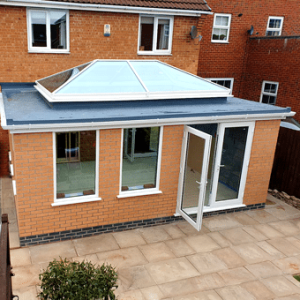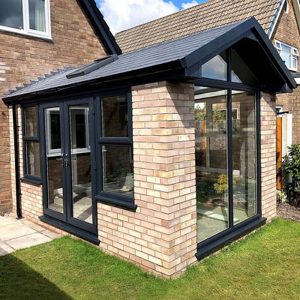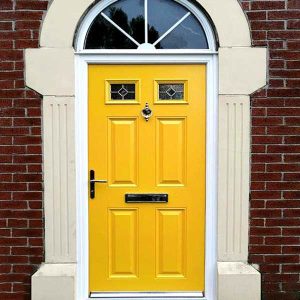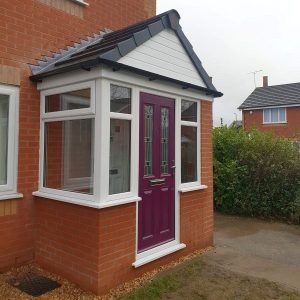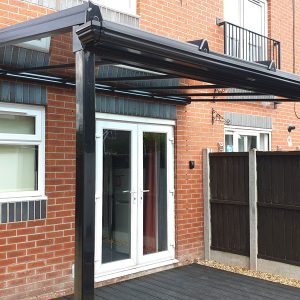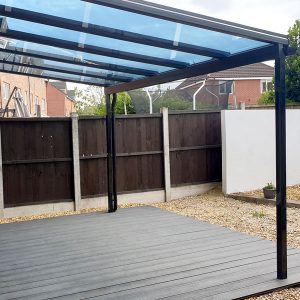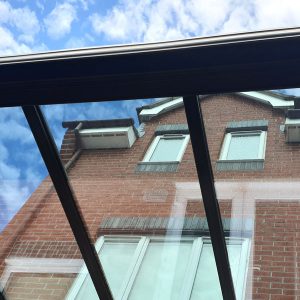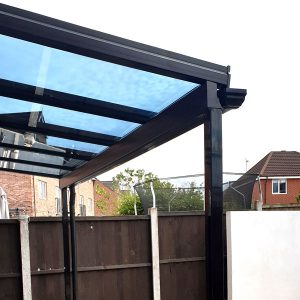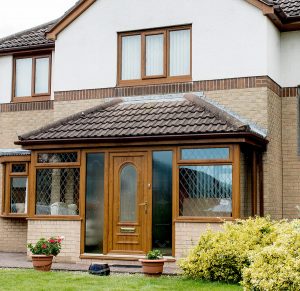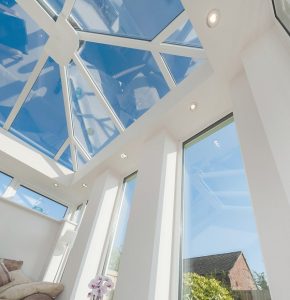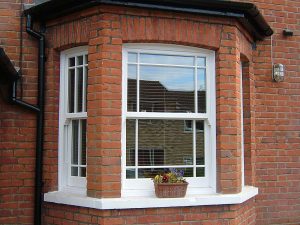Condensation on your porch can lead to water damage, mould growth, and discomfort. Reducing moisture and improving air circulation can prevent condensation from forming. Use the following strategies to create a dry, comfortable porch environment.
Identify the Causes of Porch Condensation
Warm, humid air interacting with cool surfaces often causes condensation. Enclosed or poorly ventilated porches increase the issue, especially during temperature fluctuations. Common sources of moisture include plants, wet shoes, and nearby plumbing.
Improve Ventilation
Air circulation plays a key role in preventing condensation.
1. Add Ventilation Fans
Install ceiling or wall-mounted fans to keep air moving. Use them consistently to minimise stagnant, humid air.
2. Open Windows or Doors
Allow fresh air to flow by opening windows or doors on warmer, less humid days. This balances humidity levels and prevents condensation.
3. Use Vented Panels
Replace solid panels with vented ones to encourage airflow, particularly in enclosed porches.
Control Humidity Levels
Lowering moisture levels reduces the likelihood of condensation.
1. Use a Dehumidifier
Place a portable dehumidifier on the porch to absorb excess moisture, especially during humid seasons.
2. Avoid Excess Water Sources
Move damp items like wet shoes, plants, or water bowls off the porch to eliminate extra moisture.
3. Use Desiccants
Position moisture-absorbing products, such as silica gel packs or calcium chloride, in corners prone to dampness.
Insulate Surfaces
Insulation keeps surfaces warm and reduces the risk of condensation forming.
1. Insulate Windows and Doors
Install weatherstripping or caulk around windows and doors to prevent cold drafts from lowering surface temperatures.
2. Use Insulating Curtains
Hang thermal or insulating curtains to reduce heat loss during colder months.
3. Add Rugs or Mats
Place rugs or mats on the porch floor to prevent cool surfaces from attracting moisture.
Adjust Heating Levels
Keeping your porch warm minimises the temperature difference between the air and surfaces.
1. Install a Space Heater
Use a space heater to maintain a consistent temperature during colder seasons.
2. Use Radiant Floor Heating
If possible, install radiant heating under the porch floor to warm surfaces directly.
3. Keep the Adjacent Room Warm
Ensure the room connected to the porch remains warm, reducing temperature contrasts between spaces.
Regular Maintenance
Consistent upkeep prevents conditions that contribute to condensation.
1. Clean Windows and Surfaces
Remove dirt and residue from windows, walls, and floors, as these can trap moisture.
2. Inspect Seals and Gaps
Check for cracks or gaps in the porch structure. Seal these areas to prevent drafts and moisture entry.
3. Repair Leaks
Fix any leaks in the roof, walls, or plumbing that may add to moisture levels on the porch.
Use Simple DIY Solutions
Small adjustments can further reduce condensation.
1. Install Vent Covers
Add vent covers to allow air circulation while keeping pests and debris out.
2. Apply Anti-Condensation Coatings
Use anti-condensation sprays or coatings on windows and walls to repel moisture.
3. Position Furniture Strategically
Move furniture away from walls or windows to promote airflow and prevent damp spots.
Conclusion
Stopping condensation on your porch requires effective ventilation, humidity control, insulation, and regular maintenance. By combining these methods, you can create a dry and welcoming space, free from the damage and discomfort caused by excess moisture.

